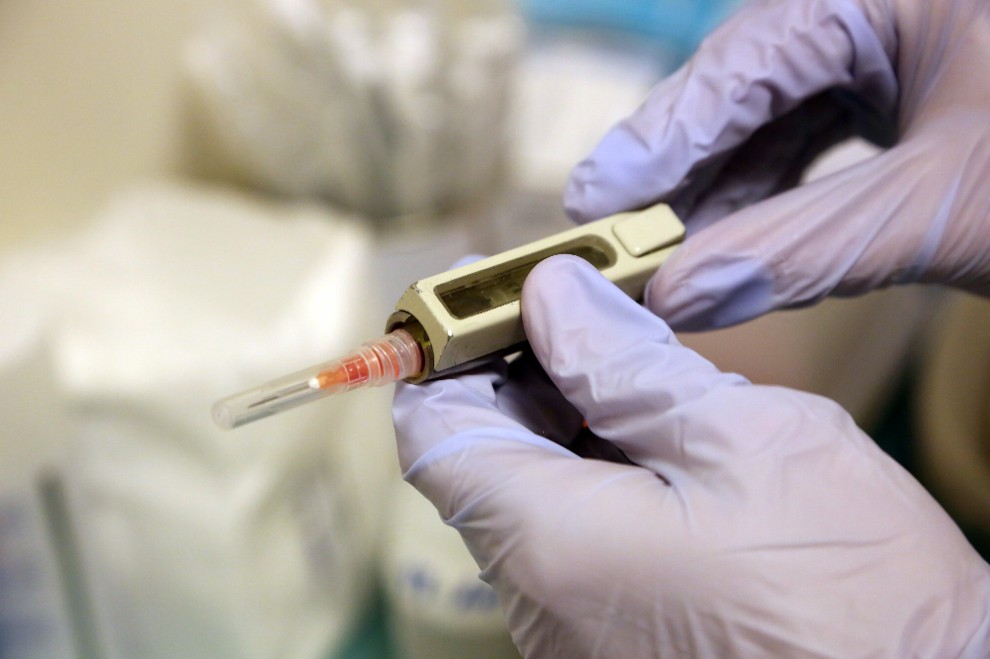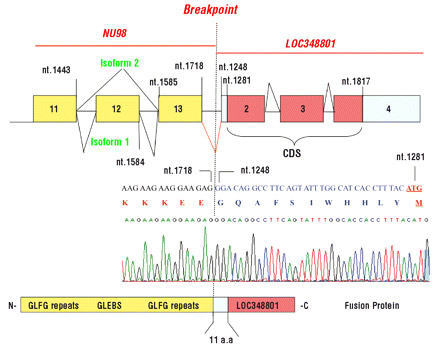NEWS
INDIETROFondazione Ginevra Caltagirone publishes the results of the research project 2014-2015

The research project funded by Fondazione Ginevra Caltagirone "IDENTIFICATION OF MUTATIONS APPLICANTS acute myeloid leukemias in PEDIATRIC BY METHODS OF NEXT-GENERATION SEQUENCING" concerned the deepening of the biological knowledge of acute myeloid leukemia (AML) of children following up project of massive sequencing of the genome of pediatric patients with AML.
In particular the object of the study were children who develop AML in first year of life and who are called "Infants". The project continued in collaboration with the Working Group on LAM Italian Association of Pediatric Hematology and Oncology (AIEOP) coordinated by Prof. Locatelli Hospital Bambin Gesù in Rome. In association with this Working Group we have been collected and published in a prestigious scientific journal the results of the treatment protocol for these patients who develop AML in such a short time after birth.
 From these results it is clear, that because the disease is very aggressive, many of these Infants have needed, to achieve a disease-free survival similar to that of other patients, a stem cell transplant. These results are very important to understand what are the categories of infants who showed more unfavorable prognostic profiles and to drive then the concomitant research laboratory that we are continuing. It's very important that the research efforts that are made in the laboratory maintain a direct line to the clinical study of patients, for you to configure the profile of research called "translational".
From these results it is clear, that because the disease is very aggressive, many of these Infants have needed, to achieve a disease-free survival similar to that of other patients, a stem cell transplant. These results are very important to understand what are the categories of infants who showed more unfavorable prognostic profiles and to drive then the concomitant research laboratory that we are continuing. It's very important that the research efforts that are made in the laboratory maintain a direct line to the clinical study of patients, for you to configure the profile of research called "translational".
The work continued in fact part of the massive sequencing of the genome is then continued starting precisely those categories of infants who showed more unfavorable prognostic profiles and has expanded to other LAM to profile more uncertain, such a normal karyotype. The search for new biological markers that characterize this disease may not only help to better understand the behavior of the disease but also to trace the prognostic and develop new targeted drugs.
Concurrently in the publication, therefore, these clinical results, with funding from the Fondazione Ginevra Caltagirone, was carried out the sequencing and has arrived to the identification of another new fusion transcript between two genes called NUP98 and PHF23, which had been previously it described as very rare in the pediatric AML.
Thanks to short validation ample of patients, it was managed to determine the recurrence of this fusion transcript in part and to clarify the biological significance. The results were submitted to the attention at this time another major scientific journal. This discovery is the fourth in chronological order, concerning the identification of recurrent genetic abnormalities by massive sequencing of pediatric AML.
In these years of the project funded by Fondazione Ginevra Caltagirone they have been identified mutations in genes that regulate cell proliferation and cell death in genes that code for enzymes that serve to DNA to divide, and others that serve to transcribe the DNA.
They were collected results in important magazines like "Blood", Oncotarget and British Journal of Haematology.
The search for new biological markers that characterize the biological profile of pediatric AML may not only help to better understand the behavior of the disease but also to trace the prognostic and develop new targeted drugs.
In fact, the experimentation of new molecules on cell lines in which are present these genetic abnormalities identified has already got under way but the results are needed for longer times.
These discoveries have however been one valuable tool in the hands of clinicians to treat better and more successful children with this serious disease.
By focusing so the specific results of the project last year, they were:
- Analyzed the clinical data and the results of treatment of all patients suffering from AML infants (ie children who develop leukemia in the first year of life) enrolled at the Italian Protocol for the treatment of pediatric AML (AML 2002/01). Publication of these results in the scientific journal Haematoligca.
- Identified two new fusion genes thanks to massive sequencing of the genome of patients with pediatric AML. The two new transcripts are RUNX1-USP42 and NUP98-PHF23. The first was described in a major scientific journal, the British Journal of Hematology and the second was recently submitted to a scientific journal other hematologic.
- It was finally undertaken the testing of new drugs targeted to inhibit specifically the cell lines carriers of some transcripts identified. The preliminary results are very promising but experimentation is currently underway.

